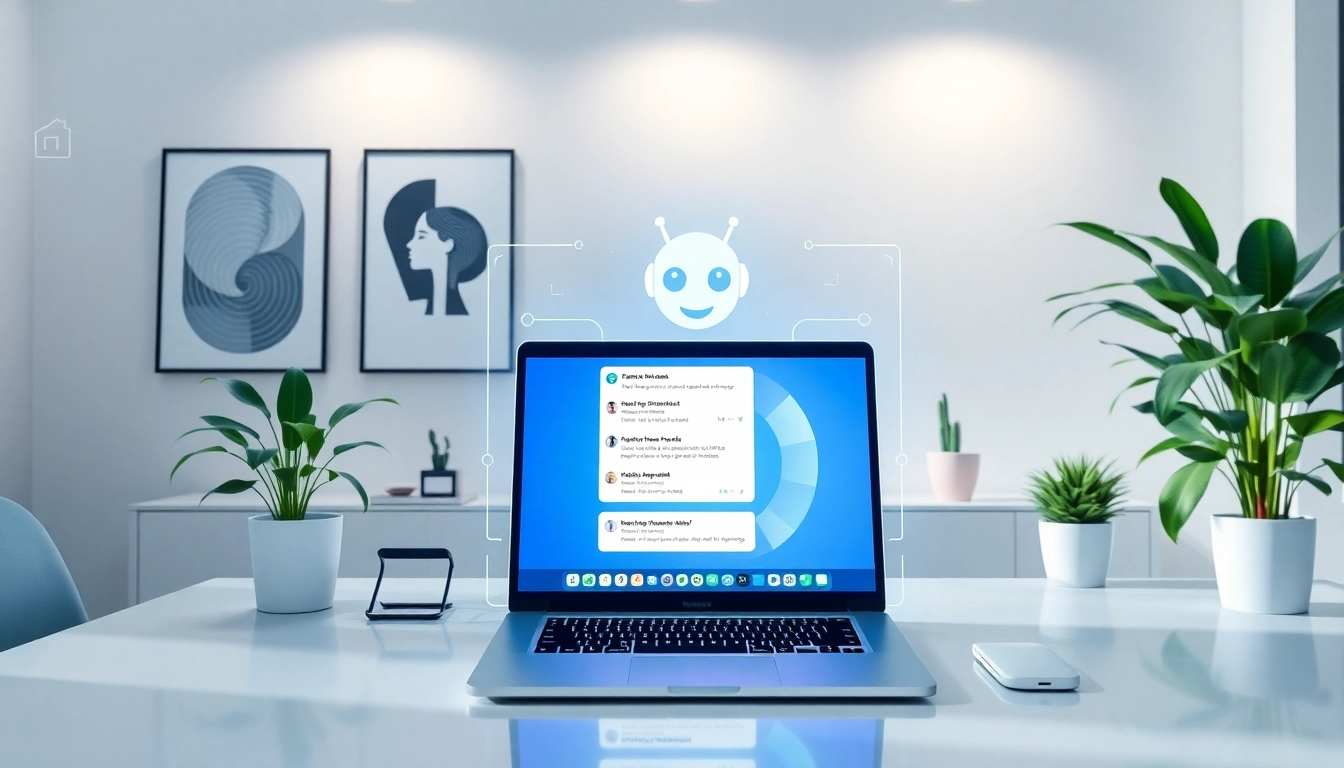
The Emergence of the ai chat bot in Modern Business
In today’s fast-paced digital world, businesses must continuously innovate to meet customer expectations.
Artificial Intelligence (AI) has revolutionized the way organizations interact with their customers, particularly through the implementation of an ai chat bot. This technology enables businesses to automate conversations, deliver instant responses, and enhance customer experiences.
Understanding the Role of ai chat bots
AI chatbots are sophisticated software applications designed to simulate human conversation through voice commands or text chats. These tools leverage Natural Language Processing (NLP) and machine learning algorithms to understand and respond to customer inquiries accurately. Businesses use chatbots to enhance customer support, provide personalized recommendations, and minimize wait times, ultimately leading to improved customer satisfaction.
Benefits of Implementing ai chat bots
Implementing AI chatbots offers numerous benefits:
- 24/7 Availability: Chatbots can operate around the clock, ensuring users receive assistance whenever needed.
- Cost Efficiency: Chatbots can reduce operational costs by handling routine inquiries, allowing human agents to focus on complex issues.
- Scalability: AI chatbots can manage multiple conversations simultaneously, providing organizations with a scalable solution to handle increased customer interactions during peak times.
- Enhanced Customer Engagement: By deploying chatbots, businesses can maintain continuous engagement with users, establishing a more interactive relationship.
Common Use Cases for Businesses
Businesses across various sectors utilize AI chatbots:
- Customer Support: Providing answers to frequently asked questions and assisting with troubleshooting.
- E-commerce: Guiding customers through purchase processes, providing recommendations, and processing transactions.
- Lead Generation: Qualifying leads by asking potential customers relevant questions to assess their needs.
- Appointment Scheduling: Allowing users to book appointments or schedule meetings seamlessly.
Choosing the Right ai chat bot for Your Needs
Identifying Business Objectives
Before implementing an AI chatbot, it is crucial for businesses to define their objectives. Whether the goal is to reduce response time, increase customer satisfaction, or support marketing efforts, having clear goals will guide the implementation process and ensure alignment with overall strategies.
Evaluating Features and Capabilities
Not all chatbots are created equal. Organizations should evaluate various features when selecting a chatbot solution, including:
- Integration: Can the chatbot seamlessly integrate with existing platforms such as CRM systems, e-commerce solutions, and customer support tools?
- Multilingual Support: Does the chatbot support multiple languages, accommodating diverse customer bases?
- Customizability: Can businesses customize the chatbot’s appearance and responses to reflect their brand identity?
- Machine Learning: Does the chatbot have advanced learning capabilities to improve based on past interactions?
Comparing Pricing Models and ROI
Chatbot pricing models can vary significantly based on factors such as complexity and scale. Organizations should compare subscription-based, one-time purchase, and usage-based pricing models to find the most cost-effective solution. Additionally, they should assess the expected return on investment (ROI) by considering how much time and money they will save by automating customer interactions.
Best Practices for ai chat bot Implementation
Designing User-Friendly Interaction Flows
An effective chatbot should provide a seamless user experience. This involves designing intuitive interaction flows that guide users effortlessly from question to answer. Scenarios should be mapped out to anticipate common user queries and ensure that the responses are clear and actionable.
Integrating with Existing Systems
For maximum efficacy, the AI chatbot must integrate smoothly with existing systems and platforms. This ensures that conversations can pull in relevant customer data, enabling more personalized and accurate responses. Maintain an open line of communication with tech teams during this process to address any integration challenges promptly.
Training the ai chat bot for Optimal Performance
Training is crucial to a chatbot’s success. Using historical interactions to teach the chatbot can enhance its ability to understand and respond to varying customer inquiries. Regular updates and retraining sessions based on new data are necessary to keep the chatbot knowledgeable and efficient.
Measuring the Impact of Your ai chat bot
Key Performance Indicators to Track
To ensure the chatbot is delivering value, businesses should monitor several key performance indicators (KPIs), including:
- Customer Satisfaction Score (CSAT): A measure of how satisfied customers are with the chatbot interactions.
- First Response Time: How quickly the chatbot provides a response to initial queries.
- Conversion Rate: The percentage of users who take a desired action, such as making a purchase after interacting with the chatbot.
- Escalation Rate: The percentage of conversations that are passed from the chatbot to human agents, indicating the chatbot’s resolution capabilities.
Gathering User Feedback for Continuous Improvement
User feedback is invaluable for refining chatbot performance. Implementing feedback loops through surveys or direct inquiries allows businesses to gather insights on user experiences, helping identify areas for improvement. Regularly updating the chatbot based on this feedback will enhance its functionality and effectiveness.
Case Studies of Successful Implementations
Analyzing case studies of successful chatbot implementations can provide valuable lessons and inspiration. For example, a retail brand that utilized chatbots for customer service saw a significant decrease in response times and an increase in customer satisfaction, showcasing the immense potential these tools hold for enhancing user experiences.
The Future of ai chat bots in Customer Engagement
Emerging Trends in Chat Bot Technology
The landscape of AI chatbot technology is constantly evolving. Emerging trends include:
- Voice Assistants: Integrating voice capabilities to provide a hands-free user experience.
- Increased Personalization: Utilizing AI to tailor interactions based on user behavior and preferences.
- Hyperautomation: Combining chatbots with other AI technologies to automate complex business processes.
Expanding Beyond Customer Service
While many businesses primarily use chatbots for customer service, their applications extend beyond that realm. Organizations are beginning to adopt chatbots for internal communications, HR functions, and even training new employees, illustrating their diverse potential to enhance various aspects of a business.
Preparing for a Bot-Integrated Business Landscape
As AI chatbots become increasingly integrated into businesses, organizations should prepare for a landscape where digital interactions are commonplace. Training staff on effective collaboration with AI tools, embracing automation, and ensuring data security are essential steps in navigating this change effectively.






